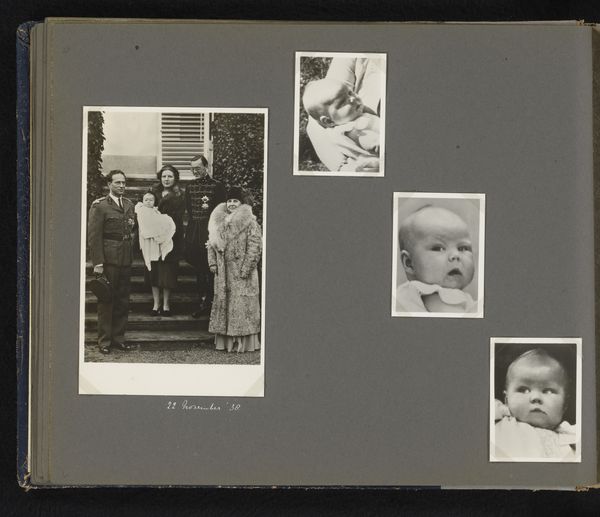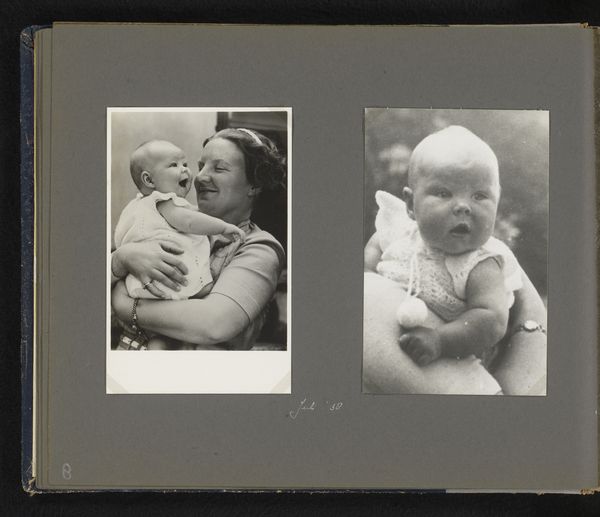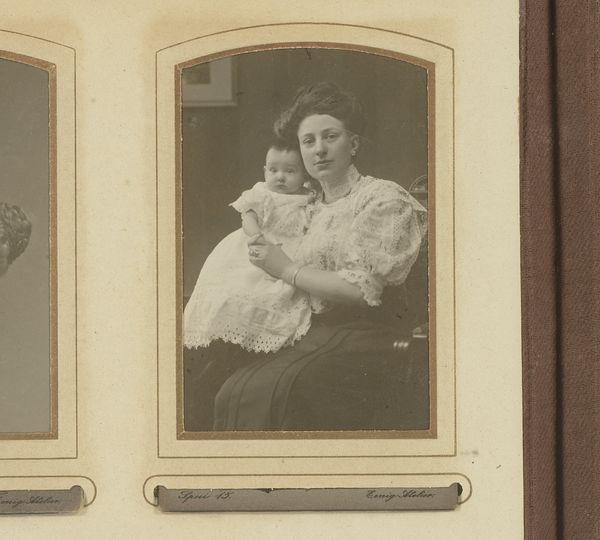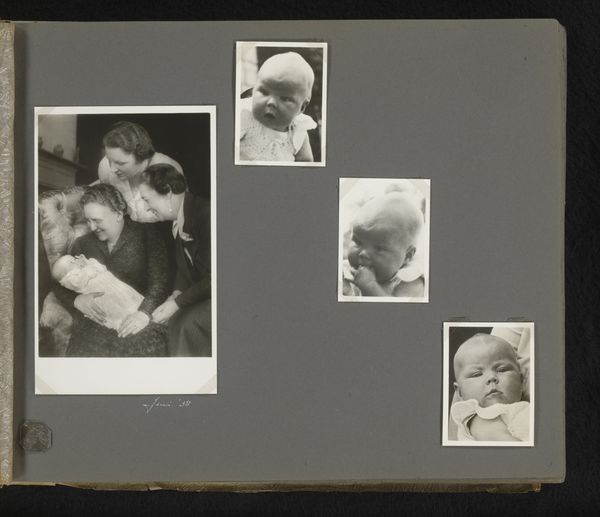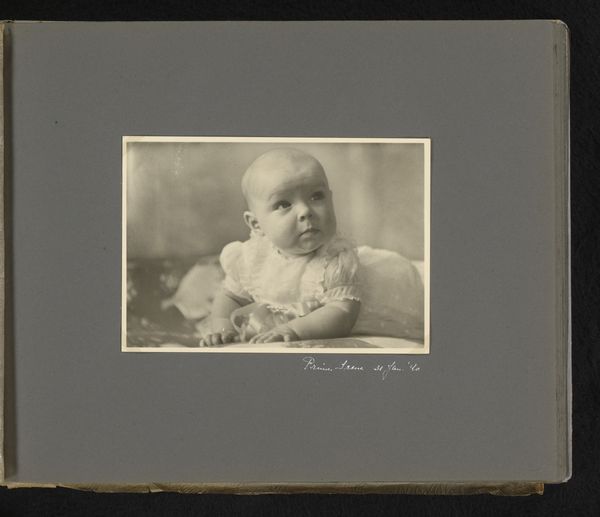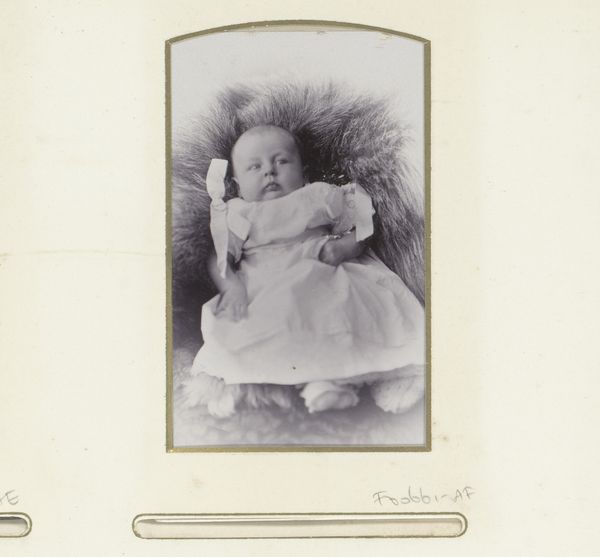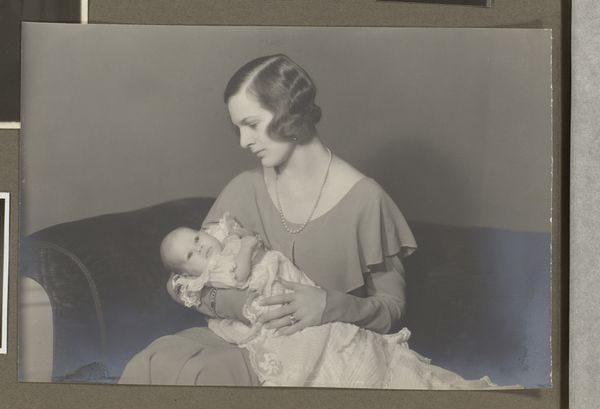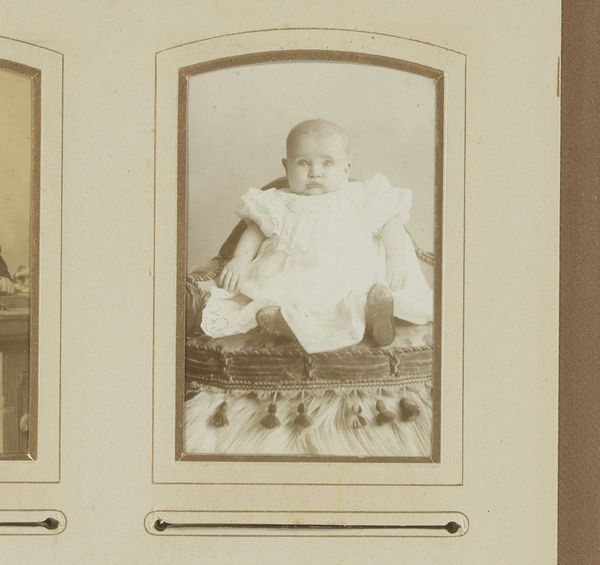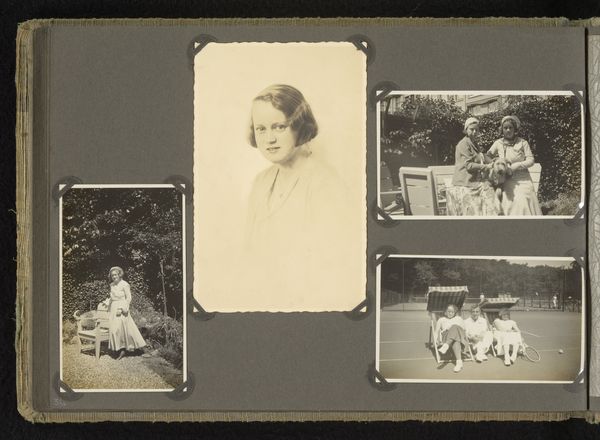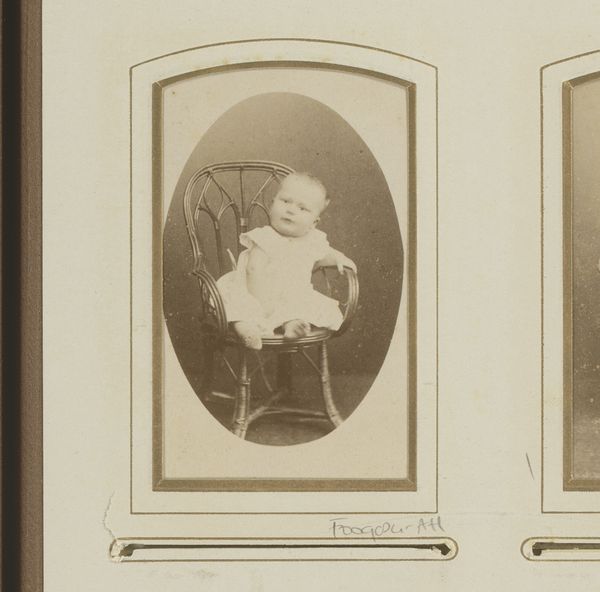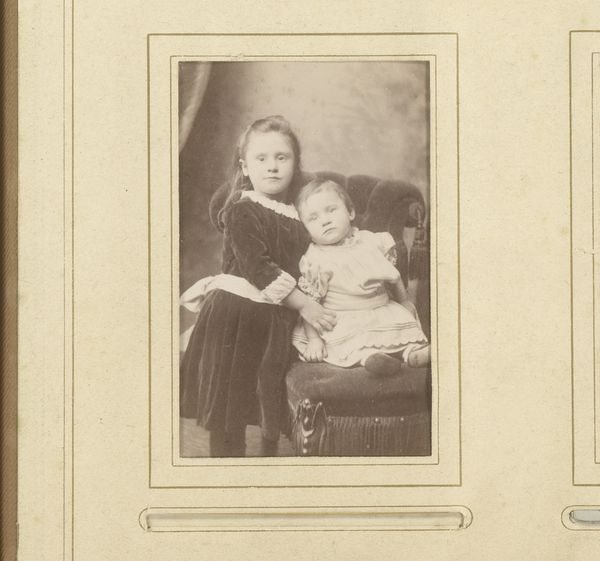
photography
#
portrait
#
photography
#
photojournalism
Dimensions: height 140 mm, width 90 mm, height 225 mm, width 275 mm
Copyright: Rijks Museum: Open Domain
Curator: Ah, look at this intimate family moment captured in "Prinses Juliana met prinses Beatrix als baby" from 1938. The Rijksmuseum holds this photograph in its collection. Editor: There’s an incredible tenderness to it, a stark contrast considering it's a staged royal portrait. You can almost hear baby Beatrix gurgling with delight, completely unaware of the weight of her future position. Curator: Absolutely. As a piece of photojournalism, even with its inherent constructed nature as royal portraiture, the materiality is vital. Think about the production and the paper used, the emulsion—evidence of craft, a stark material record of image consumption in the pre-war period. These were luxury items then, circulated strategically for public consumption. Editor: And look at the historical context—1938. Europe on the brink of war. Images of domestic bliss, like this one, were powerful tools. Think of the political undertones here; the need to portray the royal family as relatable, a source of national stability during increasingly anxious times. The institution of monarchy presented itself as enduring as global instability heightened. Curator: I agree. The conscious performance, even with a small child, cannot be overlooked. Photography as a medium offers a level of reproducibility, a way of extending royal reach throughout Dutch society through prints, magazines, newsreels… The materiality made the message infinitely malleable. It brings up questions about who has access to image-making, to manipulate narratives? Editor: It also asks how the role of the monarchy itself was changing. Royalty entering the domain of “celebrity” by leveraging then contemporary media forms. They became active participants shaping the narrative that extended beyond mere symbols of authority to reach and appeal at a popular, familiar level. These manufactured representations directly addressed ideas around duty, family, and nation. Curator: And for me, it opens the debate about what constitutes portraiture, when even posed documentary snaps blur genre boundaries. By observing these specific methods of image-making, we discover deeper meaning about a period in flux. Editor: I find that its real strength comes from the candid presentation amidst turbulent historical context—the social forces needed to normalize, to reassure. Both speak volumes when understanding the times that surrounded the royal family. Curator: Indeed. Material realities and social contexts, ever intertwined. Editor: A valuable insight delivered through a simple photo.
Comments
No comments
Be the first to comment and join the conversation on the ultimate creative platform.
